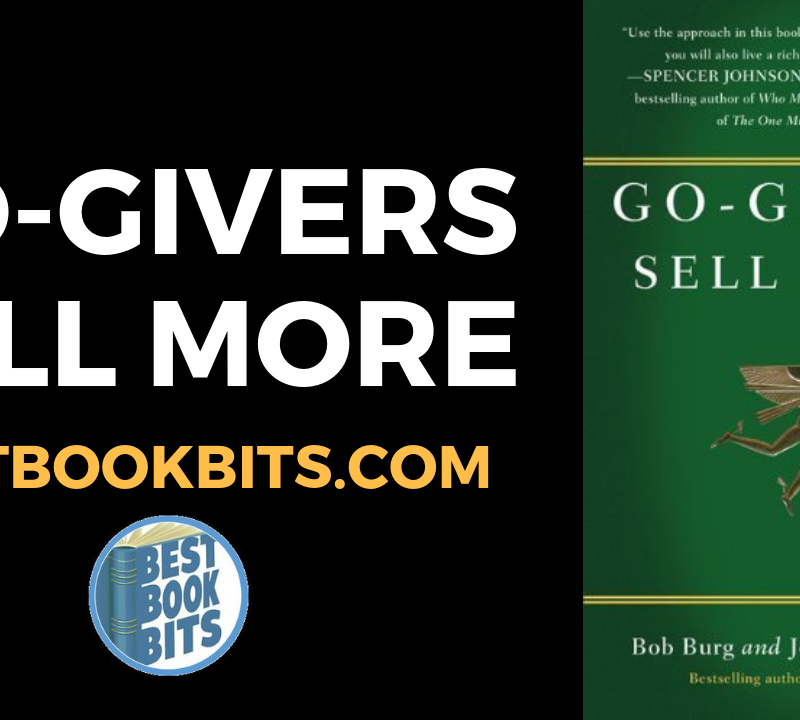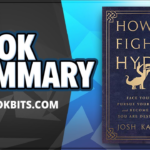★DOWNLOAD THIS FREE PDF SUMMARY HERE https://go.bestbookbits.com/freepdf
? MY FREE BOOK TO LIVING YOUR DREAM LIFE” https://go.bestbookbits.com/first-seven-steps
? SPONSOR BESTBOOKBITS BY USING PATREON https://www.patreon.com/bestbookbits
? SUPPORT BESTBOOKBITS BY CLICKING THE LINKS BELOW
- 150 PDF Summaries: https://go.bestbookbits.com/150
- Coaching Program: https://go.bestbookbits.com/coaching
- Subscribe to My Channel: https://www.youtube.com/bestbookbits?sub_confirmation=1
- Website: https://bestbookbits.com
- Instagram: https://www.instagram.com/bestbookbits
- Spotify: https://open.spotify.com/show/0q8OW3dNrLISzyRSEovTBy
- Facebook: https://www.facebook.com/michaelbestbookbits
- Book Club: https://bestbookbits.com/bookclub/
- Mailing List: https://mailchi.mp/d1dfc1907cdb/bestbookbits
Perfect Understanding is the Foundation of a Successful Close
- Gradually and systematically build a “Closing Foundation” for your sale.
Periodically verify that your prospect clearly UNDERSTANDS what you have told him.
- Only use plain, simple, sixth grade English.
- Periodically summarize what you have told your prospect up to that point. Make sure everything you say is from his point of view.
- Ask your prospect if you have made everything clear. Ask your prospect, ”Are there any questions you would like to ask?”
- Summarize your main benefits using simple English in ONE short sentence!
Establish a Buying Motive
How? By creating a need or want or strong desire in the prospect’s mind.
Some Common Examples: Health, wealth, admiration, gratification, amusement, safety, self-improvement, or the actual use or function of the item being offered for sale.
Remember our common human weakness: Not being able to say “no” to a gracious, persuasive, persistent, positive person.
Only the strongest individuals can resist the gentle but continual onslaughts of a knowledgeable salesperson.
Always try at least once more to close the sale.
Your Most Important Asset – Your Attitude
Believe that you can close every prospect on whom you call. Expect success.
Have a pleasant attitude. Be self-confident. Translate assurance to your prospect. Your prospect will reflect your image.
Know the needs and desires of your prospect. Have an impregnable answer ready for any and all objections he might offer.
Be calm, serene, poised. Exert gentle positive persuasion based on factual knowledge and confidence. Avoid being too eager.
Respect your prospect’s time. Be persistent. Be enthusiastic. Don’t talk too much. Use as few words as possible, especially at the close.
Establish Absolute Belief
At the moment of buying, the prospect is not his normal self. Instead he is a critical, uncertain, emotional, fearful individual.
The prospect puts up his guard and becomes defensive. He is afraid. He wants to avoid making a mistake, or losing his money.
To close, you must overcome the FEAR in the prospect’s MIND by REASSURING him. Instill confidence. Give him courage.
Here’s how:
- By having a quiet, well-poised, self-confident positive PROFESSIONAL ATTITUDE.
- By what you say to him.
The Three Most Common Fears of Prospects
- He will lose his money or not get good value.
Solution: Show him that it is a good value. Use a testimonial.
- The merchandise or service may not be as described. This is usually the result of poor foundation laying.
Solution: Go back over your points until he understands. Point out unusual, special features.
- What will other people think of his purchase?
Solution: Use testimonials to reassure or Narrative Selling, or show him your list of previous satisfied customers.
Important: Use reassurance statements JUST BEFORE you try to close.
Unusual Types of Prospects (80% or more are Normal)
Adjust the speed and tempo of your sales presentation to the speed at which your prospect thinks.
Tightfisted: Don’t use high pressure or you will lose. Lead him gently and persistently.
Egotist: Build on his vanity. Ask his opinion on details. Compliment him on his choice. Praise him. SELL HIM.
Factual: Drown him with facts, figures, and reasons he should buy from YOU. He isn’t that tough.
Indecisive: You make up his mind for him. Lead him gently to the close. Apply a little more pressure than usual.
Chiseler: Price, price, price. Emphasize a specific benefit, such as quality or performance or life expectancy.
Rude, Nasty: Patience. Patience. Patience. Stay in there and the storm will blow over. Then you will find a nice soft core that is not hard to sell.
Complainer: Listen with patience, sympathy. Let him talk himself out and then close in. But don’t take sides against yourself.
Moody: Wait, observe, and then follow his lead, whatever it happens to be this time.
Silent: Use normal selling techniques, but push a little harder at the close.
The Right Time to Close
If is NEVER safe to wait too long to try to close. BUT, it is dangerous to try to close too soon – it shows eagerness and greed.
So, WHEN should you close? At that moment when you believe the prospect WANTS what you are selling.
But first, be sure he UNDERSTANDS what you have said, BELIEVES IT, and you have reassured him to overcome his FEARS.
Some Clues:
1. The expression of his eyes.
- A definite action on his part, such as he picks up your literature and studies it.
- His words, such as a question which shows he’s interested.
If you detect anything that indicates he might be ready to buy, then stop right there and try to CLOSE.
The Experimental Close
A good salesperson can try to close several times, provided he is gracious and doesn’t offend his prospect.
Ask a Question: Have the prospect make a choice or decision about size, color, or mode of transportation.
Try to close a least SEVEN times before retiring for this round. It’s hard to continually resist gentle, persistent persuasion.
If unsuccessful, go back into the talk, restate in different words your main positive points, and try to close again.
When the prospect brings up an objection, always answer it briefly and then immediately try to close.
How to Successfully Field an Objection and Close on It
Four Step Procedure:
- Pause: Silence puts the prospect off balance and it gives you a chance to plan your answer.
- Smile: Sincerely smile. It shows friendliness and calmness and that you are NOT upset by your prospect or his objection.
- Answer: Briefly, in 30 seconds or preferably less. Give a concise, believable answer to the objection.
- Close: Quickly move into one of your seven standard closing routines (listed below).
Seven Basic Closing Techniques
For every sale, one technique is most appropriate. If your first choice doesn’t work, go back, rebuild, and try a different closing technique the next time.
- Assumptive Technique
Expect orders. Assume the prospect is going to buy. It’s just a matter of what kind, how many, and WHEN.
Get the prospect to focus on the question of time and ask for a decision on when he wants delivery (not if, but when).
Give the prospect a choice between alternatives.
Ask for twice as much as you expect to get – what have you got to lose?
Usually the prospect will feel good about /reducing the quantity down to what he needs. He will feel as if he is saving money.
- Subordinate Question Technique
Skip the question, “Are you going to buy from me?” and instead ask a question about an unimportant detail of the sale.
If the prospect answers that unimportant question, he is giving you his consent to proceed and that he is going to buy.
DANGER: Handle the question gently or the prospect will resent it and think you are rushing him.
However, no buyer hesitates to make what he thinks is a minor decision. Always give them a minor – not major – choice to make.
- Physical Action Technique
Do something as well as say something as you try to close your sale.
Start to do something the prospect will have to stop you from doing to prevent his giving his approval to buy.
Start filling out the order form. BUT KEEP YOUR EYES ON THE ORDER FORM and do NOT look at the prospect. Just keep writing. When you have finished, hand him the completed order and ask him to check the order to see if it is correct. When he has finished reading and looks up at you, then you point to the order form and say, “Just put your name there, please.”
An Alternative: Take the order form back before he can read it, and say you want to double check to make sure your put down the lowest possible price for him. Then, after confirming it is your best price, hand the order form back to him. HE WILL SIGN.
- Impending Event Technique
Mankind desires to avoid LOSS. The fear of losing what you have or could have had frequently causes men to act promptly.
Point out that if he fails to act now, he will lose because of . . . . . some impending event or action.
Examples: The small quantity available of this particular item, or a planned upcoming price increase.
★DOWNLOAD THIS FREE PDF SUMMARY HERE https://go.bestbookbits.com/freepdf
? MY FREE BOOK TO LIVING YOUR DREAM LIFE” https://go.bestbookbits.com/first-seven-steps
? SPONSOR BESTBOOKBITS BY USING PATREON https://www.patreon.com/bestbookbits
? SUPPORT BESTBOOKBITS BY CLICKING THE LINKS BELOW
- 150 PDF Summaries: https://go.bestbookbits.com/150
- Coaching Program: https://go.bestbookbits.com/coaching
- Subscribe to My Channel: https://www.youtube.com/bestbookbits?sub_confirmation=1
- Website: https://bestbookbits.com
- Instagram: https://www.instagram.com/bestbookbits
- Spotify: https://open.spotify.com/show/0q8OW3dNrLISzyRSEovTBy
- Facebook: https://www.facebook.com/michaelbestbookbits
- Book Club: https://bestbookbits.com/bookclub/
- Mailing List: https://mailchi.mp/d1dfc1907cdb/bestbookbits
- Narrative Technique
Tell a relevant business story to your prospect to motivate him to buy, but NOT to entertain him. Be brief and to the point.
The prospect, in his own mind, compares his business situation with that of the character in your story.
Your previous customer’s decision to buy from you is a recommendation and justification for your current prospect to buy from you.
In addition to the story, consider a Testimonial Letter, or a Customer List.
A large volume of testimonial letters overpowers the resistance of the buyer.
These letters carry more weight if they are from someone the prospect knows, or knows about, or is in the same line of business.
Tell stories logically, naturally, with ease and charm. Make them interesting and memorable. Mention specific benefits.
Before telling a story, first determine your prospect’s opinion about the character in your story.
Practice story telling before a mirror. Watch and perfect your facial expressions.
- Inducement Technique (Excellent Close Against Procrastination)
Appeals to our natural desire to get something for nothing. Or something special not commonly available, or an exclusive item.
Use this as a last resort, after all the previous closing methods have failed.
It doesn’t matter what the inducement is, just as long as it appeals to the prospect at hand.
Make sure what you offer is extra and is beyond what is normally included in the sale.
- Ask Them to Buy Technique
The Bible says, “Ask and it shall be given to you.”
Asking a favor enhances the persons self-image and importance. We all prefer doing favors than having to ask for them.
When should it be used? Only on these type prospects:
- The suspicious person with an obvious inferiority complex.
- The egotist who has a highly developed sense of vanity.
- The negative, antagonistic type.
Use this technique after trying the first six techniques above and only as your very last resort (unless your prospect is one of the three types above).
How?
Pack up your samples reluctantly and calmly head for the door. When you are almost to the door, stop, turn around, and graciously ask the prospect for his business because it is important to you. But don’t be a beggar – be a professional.
Other Tips
The manner in which a technique is used is as important as the technique itself.
Employ the Professional Attitude and select the correct positive confidence building words to use.
Avoid “if,” and use “which” instead. Also, use “why . . let’s . . . how . . . truth.”
Avoid saying “Sign here.”
Instead use:
“Just your name and address please.”
“Just write your name and address the way you want them to appear on our books.
“Would you mind looking this over, and if it’s correct put your name on the next to last line?”
The Power of SOUND has always been greater than the Power of SENSE.
Salvaging the Lost Sale
Use intelligent persistence. Be adroit, skillful, and inoffensive. Be interesting, smiling, and pleasing – not annoying and offensive.
Submit new ideas, new reasons, new arguments and try to intrigue the buyer. Rebuild the sale. Fight one more round.
Now is the time to use your secondary backup sales presentation – the one you keep in reserve for times like these.
After he has told you he is not going to buy, ask him WHY.
As you pack up your samples, say “Would you please do me a favor?”
He will say, “What is it?”
You say, “Would you mind telling me what I did wrong? That fact that you didn’t buy was my fault entirely. I am sure of that. I know you have decided against buying from me, so I am not going to mention it again. But if you will tell me what my weakness is, it might help me when I am talking to other prospects. And believe me, I would appreciate it as a personal favor.”
Forty percent of the people will sell themselves on buying from you while they are telling you why they didn’t.
Don’t give up too easily.
Post Selling Techniques to Avoid Canceled Orders
Get out as soon as possible after closing the sale without appearing eager or hurried or impatient about it.
Thank the buyer sincerely for his order – and really mean it. SMILE as you say it. Let him know his order is important to you.
Give a short Post Reassurance talk – quickly highlight the main advantages and CONGRATULATE him on his choice. It will save him money.
When No Sale is Possible With This Buyer Today
It is also important to know when to back out of the sale. Look for an exit. Leave the door open for a return attempt at some future date.
Maintain your Professional Attitude. Be a GOOD LOSER. Take your leave graciously and leave the door open for a return visit.
Know when to back out of a sale. Look for an exit. Do it in such a way to insure a warm welcome on your next visit.
Thank him for his time. Tell him you sincerely enjoyed meeting him and talking to him. Ask permission to call back another time.
Six Errors to Avoid
- Don’t be too eager. It turns prospects off.
- Don’t go too fast. You will lose your prospect.
- Don’t talk too much or wait too long to close.
- Don’t use the same closing technique on every prospect. Think carefully about which closing technique you will use as you gradually learn more about your prospect.
- Don’t try to close before laying a complete and solid foundation unless you get a definite buy signal from the prospect.
- Be careful you don’t totally misjudge your prospect. He may be tricky or a one-of-a-kind individual.
Selling to a Group of People
Appeal to the ego of each member of the group and don’t deflate or offend any member’s ego.
Pay a little more attention to the leader of the group because he will expect it. Do NOT ignore any member of the group.
Make and hold eye contact with the leader and do it more often than with the other members of the group.
Use each member’s name during your talk and use the leader’s name most frequently.
And smile. SMILE. And smile some more. Avoid the smirk. What is the difference? It is in your eyes and your eyebrows.
If an objection surfaces, handle it the same as usual – but extend the pause slightly. Silence is powerful because it disarms the group.
Don’t prejudge anyone. Be flexible. Don’t hold grudges. Be open minded.
But SELL at every opportunity.
Repeat Calls
Analyze your first call. Determine your potential mistakes. Avoid them the second time.
Totally restructure your pitch, but include some familiar items – your very best ones.
Recondition and resell your prospect all over again. Don’t skip a single step. Offer him something new – at least an idea.
Give him something, a suggestion, he can use to improve the profitability of his business.
Don’t accept a lost customer. Fight to get him back. Call him. Find out why. Make an adjustment if necessary.
Make more contacts. Make more calls. Close more calls. Watch your earnings skyrocket.
Whether or not a prospect buys from you, leave each prospect with an idea to improve his business. That is one of the distinguishing characteristics of a Professional Salesperson.
★DOWNLOAD THIS FREE PDF SUMMARY HERE https://go.bestbookbits.com/freepdf
? MY FREE BOOK TO LIVING YOUR DREAM LIFE” https://go.bestbookbits.com/first-seven-steps
? SPONSOR BESTBOOKBITS BY USING PATREON https://www.patreon.com/bestbookbits
? SUPPORT BESTBOOKBITS BY CLICKING THE LINKS BELOW
- 150 PDF Summaries: https://go.bestbookbits.com/150
- Coaching Program: https://go.bestbookbits.com/coaching
- Subscribe to My Channel: https://www.youtube.com/bestbookbits?sub_confirmation=1
- Website: https://bestbookbits.com
- Instagram: https://www.instagram.com/bestbookbits
- Spotify: https://open.spotify.com/show/0q8OW3dNrLISzyRSEovTBy
- Facebook: https://www.facebook.com/michaelbestbookbits
- Book Club: https://bestbookbits.com/bookclub/
- Mailing List: https://mailchi.mp/d1dfc1907cdb/bestbookbits













